
The Carnegie Library at FAMU is a historic building on the campus of Florida A&M University in Tallahassee, Florida. Built in 1908, the two-story, white-columned building was added to the National Register of Historic Places in 1996. "It was part of a national building program by philanthropist Andrew Carnegie." The Black Archives was established by the Florida Legislature in 1971 and opened in 1975. It was one of many public and college libraries funded by Andrew Carnegie, which were named Carnegie Library after him. It is the oldest brick building on the campus and the first Carnegie Library to be built on a black land-grant college campus.

Gratz Park is a neighborhood and historic district located just north of downtown Lexington, Kentucky. It was named after early Lexington businessman Benjamin Gratz whose home stands on the corner of Mill and New streets at the edge of Gratz Park. The Gratz Park Historic District consists of 16 contributing buildings including the Hunt-Morgan House, the Bodley-Bullock House, the original Carnegie Library in Lexington, and several other private residences. Gratz Park occupies a tract of land that was established in 1781 outside the original boundaries of Lexington.
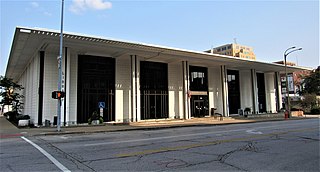
The Davenport Public Library is a public library located in Davenport, Iowa. With a history dating back to 1839, the Davenport Public Library's Main Library is currently housed in a 1960s building designed by Kennedy Center architect Edward Durell Stone. The Davenport Public Library system is made up of three libraries—the Main Library at 321 Main Street; the Fairmount Branch Library at 3000 N. Fairmount Street (41°33′06″N90°37′54″W); and the Eastern Avenue Branch Library at 6000 Eastern Avenue (41°34′59″N90°33′12″W).

The B.F. Jones Memorial Library is a historic library in Aliquippa, a city in Beaver County, Pennsylvania, United States. Named for steel tycoon Benjamin Franklin Jones, it was built in 1927 with money donated by Jones' daughter. As a product of the profits of the Jones and Laughlin Steel Company, for which Aliquippa was a company town, it resembled a Carnegie library.
The Carnegie Branch Library at 13th St and 28th Ave in Meridian, Mississippi is one of two former Carnegie libraries in the city, both funded by a grant from Andrew Carnegie in 1904. This library was built for blacks while the other was built for whites. The other library was built at 25th Ave and 7th St and now houses the Meridian Museum of Art. Both buildings were listed on the National Register of Historic Places in 1979. The black library was demolished in 2008.

The Joplin Carnegie Library is a historic Carnegie library located at Joplin, Jasper County, Missouri. It was built in 1902, and is a two-story, Classical Revival style steel frame building sheathed in brick and white Carthage marble. It measures 79 feet by 86 feet and features a pedimented Ionic order porch which is distyle in antis. A four-bay two story addition was added in 1916. Andrew Carnegie provided $40,000 for its construction.
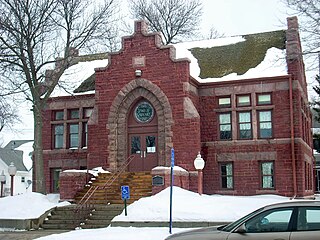
Pipestone Public Library in Pipestone, Minnesota, United States, is a Carnegie library that was built in 1904. It was an important work of architect Joseph Schwartz. It was listed on the U.S. National Register of Historic Places in 1980.

Phillips County Carnegie Library is a Carnegie library on the National Register of Historic Places located in Malta, Montana. It was added to the Register on August 27, 1980. For a time, it was used as a museum interpreting local history.

The Carnegie Library in Anaheim, California is a Carnegie library building built in 1908. The Classical Revival style building was designed by John C. Austin, and opened in 1909.

The Valley City Barnes County Public Library, also known as Valley City Public Library or the Valley City Carnegie Library, in Valley City, North Dakota, United States, is a Carnegie library that was built in 1903. It was listed on the National Register of Historic Places in 1979.

Fairfield Public Library is located in Fairfield, Iowa, United States. A library association was founded by a group of local men in 1853, and funded by dues from its members. It was housed in several different buildings for the first 40 years. U.S. Senator James F. Wilson from Fairfield was instrumental in obtaining a grant from Andrew Carnegie for a building of its own. The grant for $40,000 was accepted on January 15, 1892. It was the first Carnegie Library outside of Western Pennsylvania and the first of 101 built in Iowa. It was also one the few libraries Carnegie funded without stipulations concerning its use, public support, or design. The building was designed in the Richardsonian Romanesque style by Kansas City architect C. Stafford. It was officially opened on Friday, September 29, 1893, and it was dedicated on November 28 of the same year. The association continued to run the library until 1899 when voters approved a referendum to support it with taxes. The building has been altered in the ensuing years, and it was listed on the National Register of Historic Places in 1983. The library moved to a new building in 1996, and the historic building is now home to the Jefferson County Service Center of Indian Hills Community College.
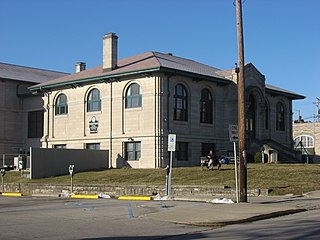
Monroe Carnegie Library, also known as Old Monroe Carnegie Library, is a historic Carnegie library located at Bloomington, Monroe County, Indiana. It was built in 1917, and is a one-story, rectangular, Neoclassical style limestone building on a raised basement. The Monroe County History Center is a history museum the historic library building that was established as a Carnegie library. The museum is located on the site of Center School in the former Bloomington Public Library building. The library building is now home to the Monroe County Historical Society, their collection of artifacts, and their Genealogy Library. A historical marker is present at the site. The History Center is located at 202 East 6th Street. It is a tourist attraction.
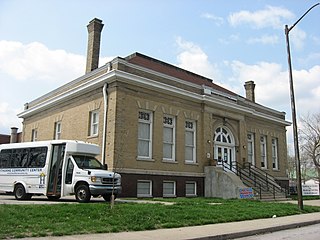
Hawthorne Branch Library No. 2, also known as Hawthorne Education Annex, is a historic Carnegie library building located in Indianapolis, Marion County, Indiana. Built in 1909–1911, with funds provided by the Carnegie Foundation, it is a one-story, rectangular, Classical Revival style brick and limestone building on a raised basement. It has a truncated hipped roof and features a slightly projecting pavilion housing a round arch. It was renovated in 1955, after its closure as a library, and again in 1999.

Indianapolis Public Library Branch No. 3, also known as East Washington Branch Library, is a historic Carnegie library located in Indianapolis, Indiana. It was built between 1909 and 1911, and is a one-story, rectangular, Tudor Revival style dark red brick building on a raised basement. It has a truncated hipped roof behind a castellated parapet, and features terra cotta details and two hooded monk sculptures by Alexander Sangernebo. It was one of five libraries constructed from the $120,000 the Carnegie Foundation gave the city of Indianapolis in 1909 to be used towards the construction of six branch libraries. The other buildings include the Indianapolis Public Branch Library No. 6 and the Hawthorne Branch Library No. 2. A full renovation of the library was carried out in 1978 at a cost of $200,000. During a 2003 renovation, the interior was recarpeted and the metal entry doors, which were put in during the 1978 renovation, were replaced with custom oak doors modeled after the original doors. Indianapolis Public Library Branch No. 3 retains a high level of architectural integrity and continues to serve the community in its original role. The library remains in operation as the East Washington Branch of the Indianapolis Public Library.

Indianapolis Public Library Branch No. 6, also known as Spades Park Library (Carnegie), is a historic Carnegie library located in Indianapolis, Indiana. It was built in 1911–1912, and is a two-story, "L"-shaped, Italian Renaissance style masonry building on a raised basement. It has a terra cotta tile hipped roof, decorative brickwork, limestone accents, and elements of American Craftsman and Arts and Crafts style decorative elements. It was one of five libraries constructed from the $120,000 the Carnegie Foundation gave the City of Indianapolis in 1909 to be used towards the construction of six branch libraries. The library remains in operation as the Spades Park Branch of the Indianapolis Public Library.
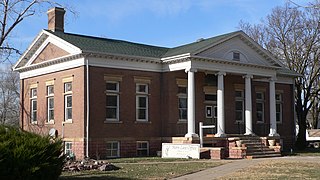
The Yankton Carnegie Library is a historic building in Yankton, South Dakota. It was built as a Carnegie library in 1902–03, and is Neoclassical style in style. It was built by German-born contractor August Goetz. It was a public library from 1903 to 1973.
The Andrew Carnegie Library in Corona, California in Riverside County, California, at 8th and Main Streets, was a Carnegie library built in 1905–06. Known also as the Old Corona Public Library, it was listed on the National Register of Historic Places in 1977. The building was demolished in 1978, but apparently still remains listed on the National Register.
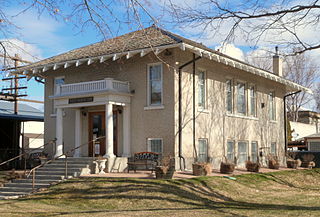
The Mountain Home Carnegie Library, at 180 S. 3rd St. East, in Mountain Home, Idaho, was built as a Carnegie library in 1908. It was listed on the National Register of Historic Places in 1978.
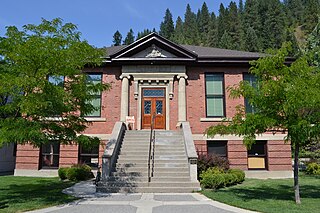
The Wallace Carnegie Library, in Wallace, Idaho, was built in 1911. It was listed on the National Register of Historic Places in 1981.



















